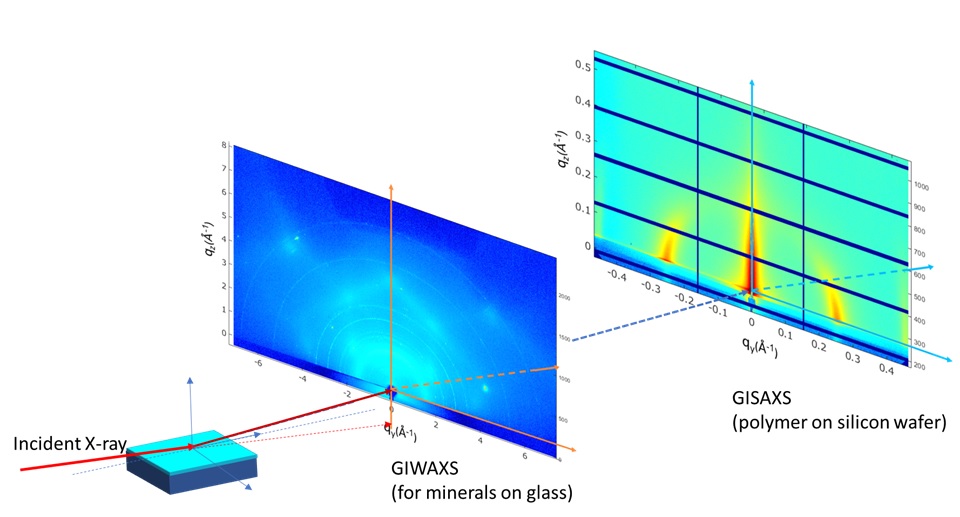GISAXS & GIWAXS
Grazing Incidence Small- and Wide-Angle X-ray Scattering

Grazing incidence is the right technique for thin samples deposited on smooth substrates, as it increases the x-ray footprint on the samples, and therefore the scattering signals.
Samples
Thin samples, or thin samples deposited on substrates, may require reflection geometry as opposed to standard transmission geometry. Typical samples for GISAXS/WAXS are polymer thin films, mineral precipitates, pattern directed self-assemblies, deposited on solid substrates.
Detectors
GISAXS measurements use the Pilatus 2M detector. Typical camera length is 2m and the in-plane Qmax is up to 0.3-0.4 A^-1. A PerkinElmer detector (XRpad 4343F) is employed for GIWAXS measurements. The detector is located about 18cm away from the sample, and detecting Q range is ~0.4 – 10 A^-1.
Setup
At 12-ID-B, GISAXS and GIWAXS are available independently (not simultaneously) with different detectors and setups. Typically, samples are run in air and at room temperature using a holder built for individual or multiple samples. Common substrates are silicon wafer, glass, and other substrates with smooth surface.
Beam Size
Grazing incidence measurements use vertically focused beam on a sample. The vertical beam can be tuned from 0.10 to 0.02mm using a CRL set at the far upstream. The vertical beam size at this beamline is normally focused to 0.02-0.03mm for GISAXS and GIWAXS measurements. The horizontal beam size is about 0.10-0.14mm.
Note: To make the sample alignment easy, the recommended substrate size is: ~10mm (length) x 5-10mm (width) x ~1mm(thickness).
